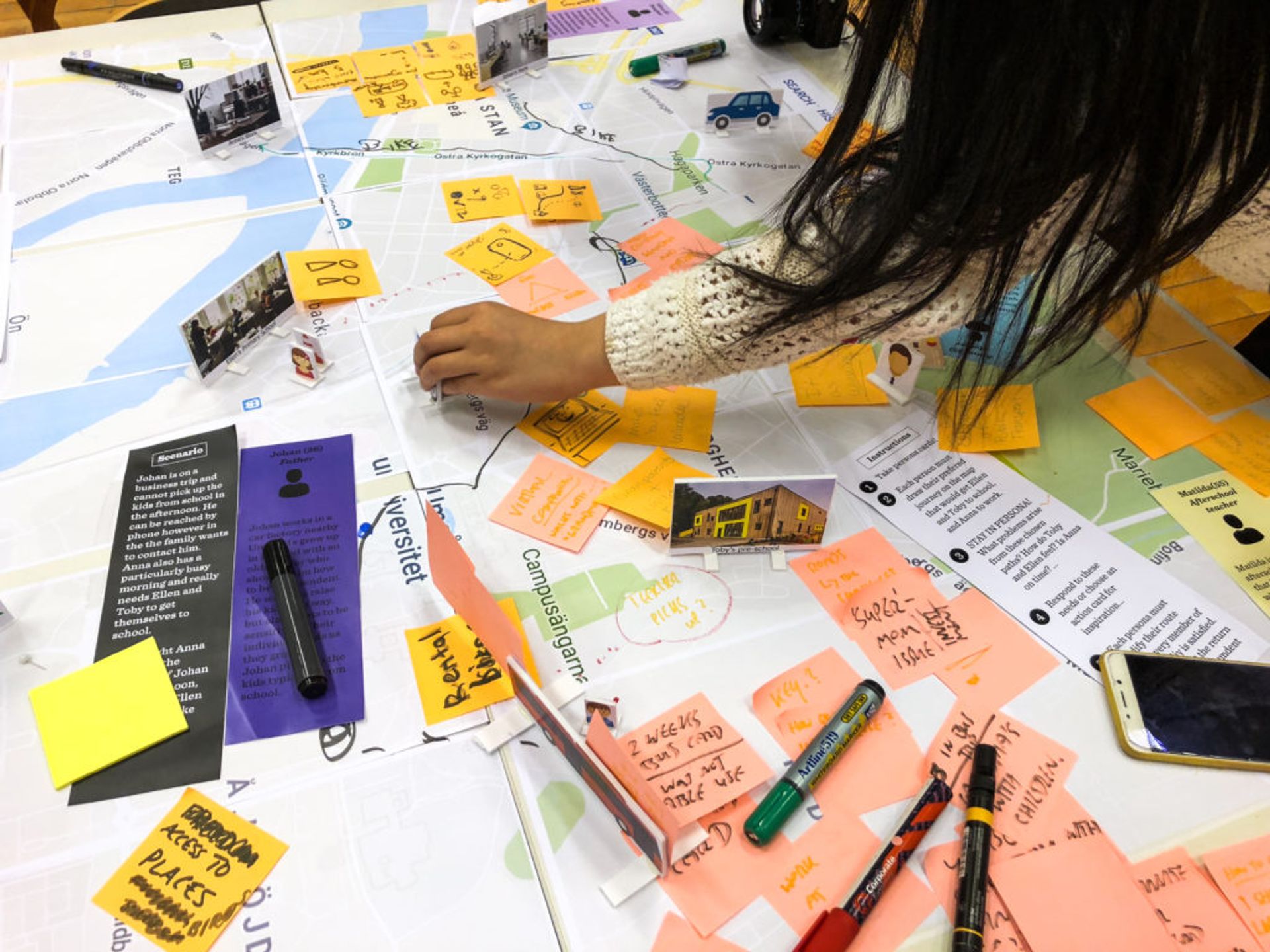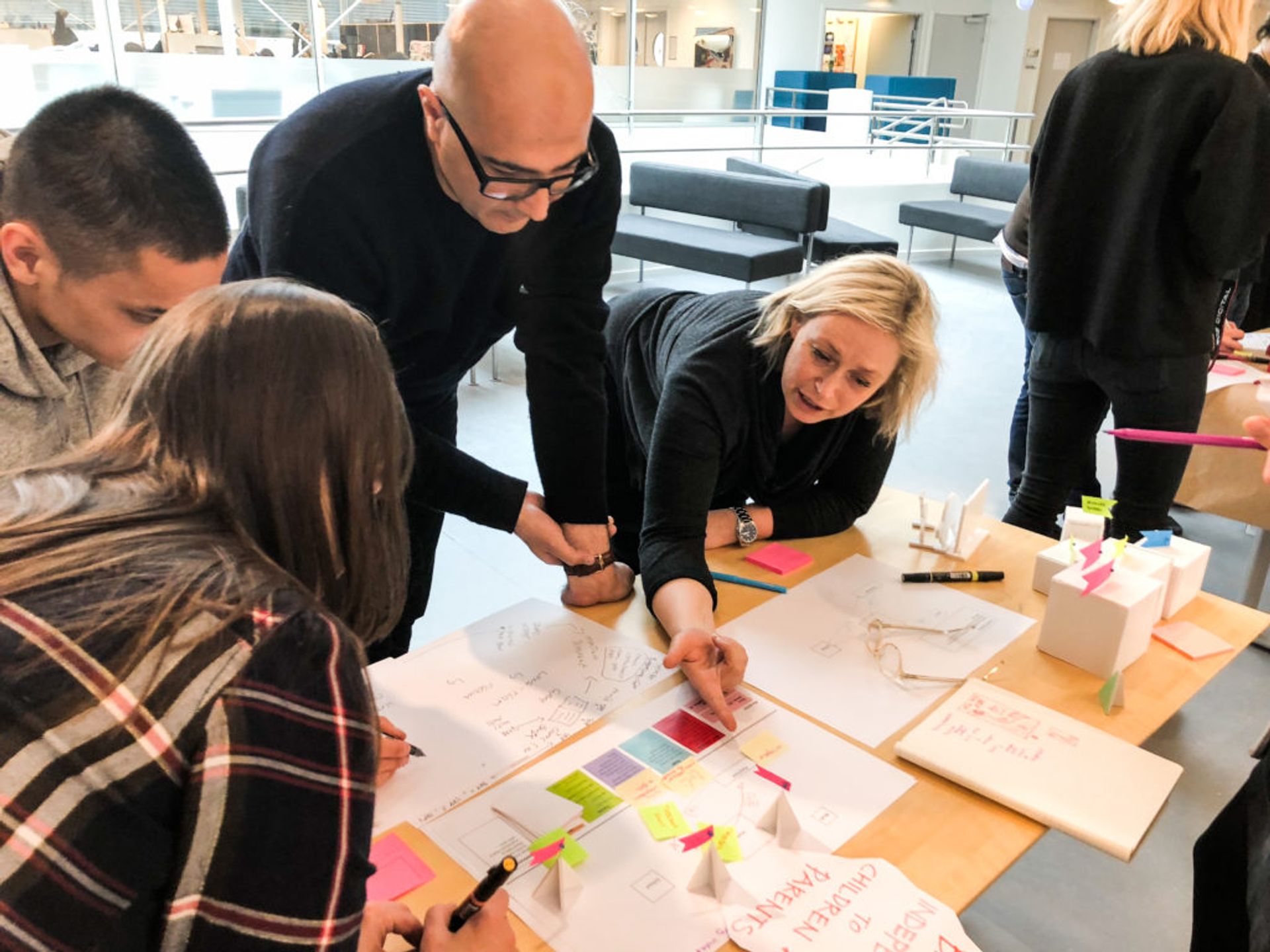
Written by Carolyn
30 Apr 2018
Ever wonder what kind of research happens in the design process?
There are actually many types of research methods that are used to build a platform for design. The methods chosen depend largely on the user, the context, and the type of design involved. Here at Umeå Institute of Design, we are encouraged to explore adaptable methods of research that build a strong foundation for all of our work.

Focusing on Mobility
For the Interaction Design program’s last project of the semester, we are looking at injustices within the mobility and transportation services in Umeå for Umea Kommun and the city’s bus company, Ultra. For this particular project, our research objective and approach was a bit different. Instead of having a specific target group predefined for our class to research, the target group was actually to be defined through the research we conducted and its outcome. This meant our observations and interviews would define the direction of our projects. This was daunting and a bit scary since it felt so broad and undefined at first; we were not sure exactly where our research would be lead!

Learning How to “Snowball”
First, we began by doing “snowball” interviews. In teams, we contacted people we knew around Umeå, and even approached people on the street to ask about their mobility routines and thoughts on transportation. If the interview went well, we often were referred to someone else that they knew who we could speak with after. Ideally, this referral to other people for interviews and gathering of knowledge, or “snowballing,” would lead to critical insights into the transportation system. Even though in the moment it may have felt like we were gathering only a select and narrow view of this public service, it quickly became clear that their individual experiences exposed a broader systemic picture of mobility in Umeå.

Deep Dive…
After several weeks of doing this form of “snowball” research, we were able to dive into several people’s lives to really get an understanding how they constructed their mobility practices for themselves based around the offerings and constraints of the current public transportation. This meant we were able to shadow people on their journeys from home to work, and on daily errands to do more observational research that would help us to identify subtleties not understood from standard interviews.

Participatory Design
These methods of information gathering then lead to the identification of problems within the public transportation system and our subsequent creation of conceptual solutions. To keep the flow of input and information coming, we then held a “participatory workshop” with the stakeholders of the project to engage them with the research and concepts we had collected and developed. By having others work with the information, we were bringing a new set of eyes on the project, and getting input and analysis from people of different backgrounds and expertise. This helped to keep our work fresh, more objective and inspired.

Next Steps
Next, we will create quick and iterative “probes,” or interactive design prototypes, of our concepts and place them out in their appropriate contexts such as bus stops, inside buses, city information centers etc. From this exploration, we will start to see how people will react to and interact with our designs, and hopefully encourage discussions that generate feedback. These prototypes are yet another way to make our research and design “participatory,” as we will incorporate our findings from them into our design. Although this process of research has been intimidating and challenging, it is an excellent way to access relevant and meaningful information that will help us to design more impactful and inclusive solutions for the public transportation system in Umeå!







